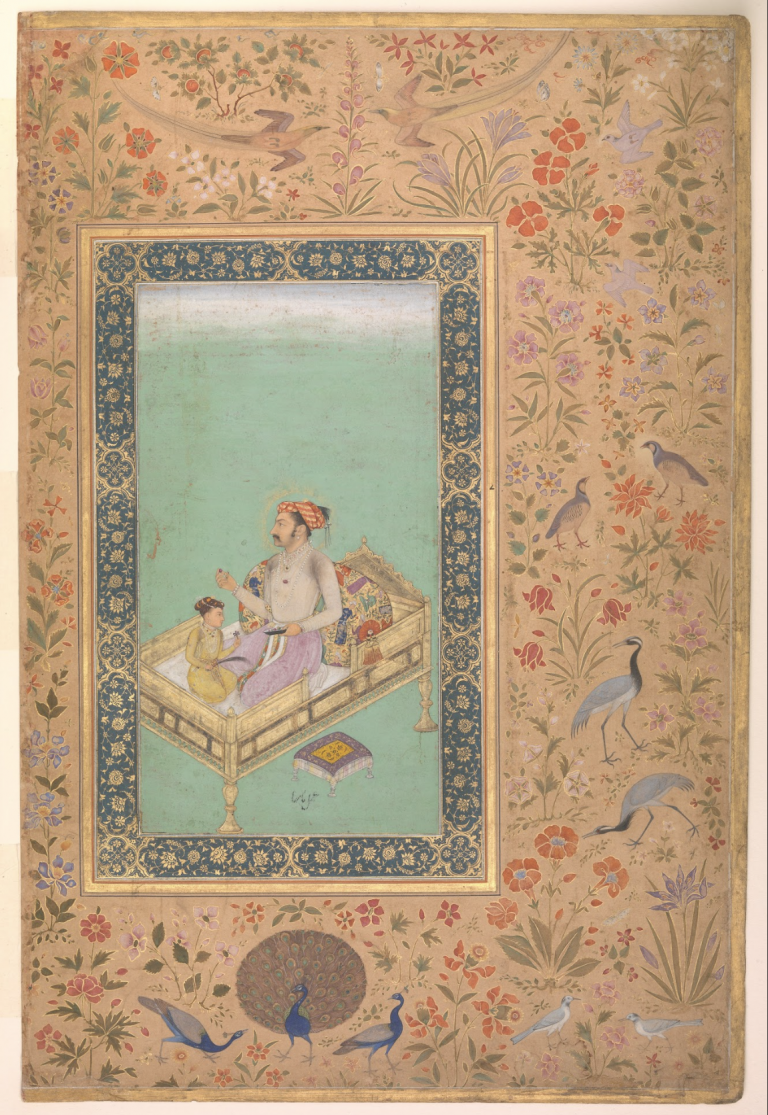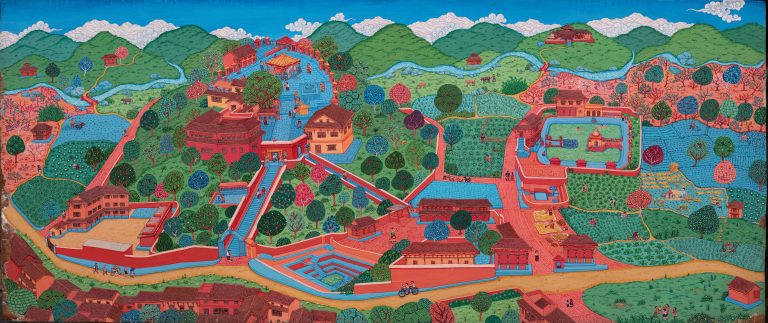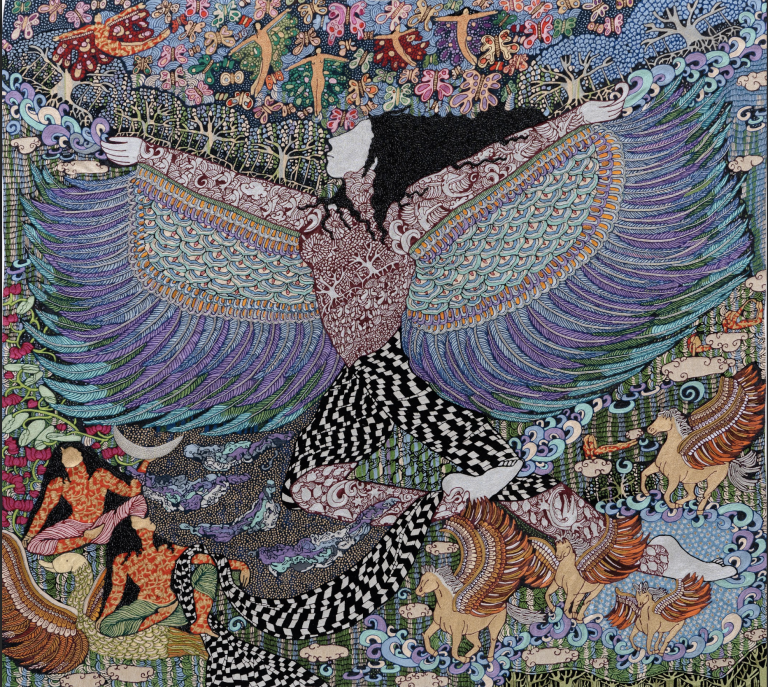The last decade has been the most tumultuous for Indian contemporary art. The 00s witnessed an unprecedented boom that lasted until almost two years ago, when the economic downturn and worldwide recession caused the inflated art balloon to burst with a spectacular bang. In retrospect, both the boom and bust did signal service to the cause of Indian contemporary art. In this din and cacophony, the institution of galleries has been largely instrumental in strengthening and beckoning stability back to the art market. Like avid stakeholders, the gallerists and collectors had been vying to get a piece of the delectable pie, initially sweetened by the meteoric rise in price and now soured by the reality check of an economic downturn (this will have the perfect repercussion of ridding the field of chaff and bringing centre stage artistic merit and not signature).
TAKE Gallery, our second issue builds an objective methodology, on the role of the galleries operating within and across the national parameters vis-à-vis the attitude adopted post-recession towards promotion/sales/support vis-à-vis artists and artworks. Galleries in India have upgraded to professional white-cube spaces common in London or New York and high-quality publications are bridging the gap for documentation. In India and the subcontinent, art galleries, and not museums or institutions pave the way for art and culture unlike art centric cities like Berlin, Zurich amongst others. Quite evidently, the changing patterns in economic, political and social structures resulted in changes in forces that circulated the economy of art. TAKE Gallery underscores several crucial functions galleries perform today. Some being, examining the role galleries play in supporting the arts and the artist versus the role the artists expect a gallery should play [a charitable institution, a funding body, a travel agent et. al!!]. Are there any chalked out guidelines for galleries or can we make our own rules?
Not long back, India not only lacked a formal gallery system but also a channel and means of developing and fathoming the experience arousing out of such an unconventional practice. During the pre-independence era, even when art schools were established, it is a known fact that the patronage towards buying and selling art mainly came from the British elite in India and later by the ‘cultured’ Indian bourgeoisie. Artists post-independence mainly depended on the state resources to further their practice. Artist Ram Kumar in his article ‘On Patrons’ written for Seminar magazine a few decades ago stated, “State patronage has come to us under various forms – the formation of the Lalit Kala Akademi, the National Gallery of Modern Art in Delhi and a project for similar galleries in every state, the purchase of works of contemporary Indian artists for various offices of Indian embassies and the commissioning of artists for murals and other decorative work on government buildings and in government-sponsored industrial and agricultural exhibitions.”
It would be rather interesting to comprehend artist Ram Kumar’s statement made in his article, ‘On Patrons’ (mentioned above) at a time when the commercial art gallery, though recognized in Europe as the only institution capable of giving patronage to artists in the free and competitive art market, had not yet made any mark in India. The reason being, “Though it has had some success as a commercial venture, neither the artist nor the public has been able to accept the idea of this ‘middleman’ as the ultimate solution to the material difficulties of artists. Exhibitions organized by the artists themselves in hired halls are still what art lovers and patrons are accustomed to. But the advantages acquired by art galleries in establishing a permanent place where works by different artists are available at any time and the resources and wide contacts available to a gallery in effecting a sale to a larger public are being realized. At present, due to the lack of sufficient finance, gallery owners avoid incurring risks. They merely play the role of middlemen who take commissions on works sold at the gallery.” Kumar also tried to envision a time “when potential buyers increase and Indian art gets more recognition outside India, some big financiers and speculators will be attracted towards this business. They will consider paintings a commodity worth speculating upon, thus making an art gallery much more important than it is at present.”
In absence of any defined policy, it would not be difficult to visualize the thwarted state of mind of the artists. Our gallery scene dates back to the establishment of Dhoomimal Gallery by Ram Babu Jain in 1936 at the heart of the national capital, Connaught Place. The gallery made its beginnings by displaying the works of well-known painters of yesteryears like the late Sailoz Mukherjea and Jamini Roy, soon becoming a buzzing hub for contemporary art as well as a meeting place for the capital’s artists. After his demise, the leadership of the gallery passed in to the hands of his son Shri Ravi Jain and in the 70’s regular exhibition of artists such as M.F. Husain, J. Swaminathan, Shanti Dave, F.N. Souza, Gade, Krishen Khanna among a host of others were held. Ravi Jain and J. Swaminathan, were considered as one of the earliest artist-dealer team and probably, this is a point from where one can trace the strong camaraderie being developed between a gallery and its binding artists.
In Mumbai a thriving trade and commercial centre of that time, the earliest galleries were Pundole Art Gallery [established by Kali Pundole] in May 1963, and Gallery Chemould [Kekoo and Khorshed Gandhy] established in the same year. Both galleries have the distinction of exhibiting and representing the works of major artists, emerging from the first waves of India’s modernist and contemporary art movements. Other galleries that were established were Cymroza Art Gallery [Mumbai], Kumar Gallery [New Delhi], Black Partridge [New Delhi], CCA [New Delhi], Sakshi [Mumbai], Vadehra [New Delhi] amongst others. The first section TAKE Gallery, anticipates critical discussions on the undercurrents of the transitions surfacing within the galleries as an institution for more than a decade of its existence. Ina Puri dons the role of an arts connoisseur in I’ve Been Here… and revisits the art spaces she has known intimately down the years, exploring the versatility and ability to reinvent of the old ones as well as the new crop exhibiting experimental genres. And while we might blow the trumpet of ‘professionalism’ seeping the institution of galleries, it was a matter of realization for the TAKE team working to gather responses from the leading galleries across the globe for this piece, that the picture is still not that rosy. Of every 5 galleries approached, we got feedback from 3, [images, quotations et. al] and our contributing writers second my opinion I am sure!
So are we there yet? Probably not.
But undoubtedly a set of commercial interests drives the function of the ‘white cube’. The issue seeks to analyze these and in this context, the role of valuation services revolving around art extended by leading international auction houses is of substantial interest. Although auction houses have injected a degree of instability in the market, their role in statistically proving value of an art object as an asset through detailed cataloging and evaluation of art collections, brings sense to a wide circuit of buyers while collecting artworks. While auctions have been largely attributed as imparting the indexical value to art market, Anders Petterson in an exclusive article for TAKE titled Think Global, Act Local credits the role of the primary market in stabilizing the downswing in the market. In this context, he adeptly shapes pointers locating the strength of galleries vis-à-vis their approach towards effective artist representation and values that direct a successful business in this industry. At the same time Johny ML chalks out the ideological roles played by galleries in any given context of aesthetic production in his article Art, Ideology and Galleries.
Galleries today acting as the main players in form of the primary market with capacity to riddle/diddle the market in the boom as well as the recession phase, has transgressed to a space for interaction, creation, and an open discourse in the twenty-first century India to an extent experienced never before. This has also been immensely facilitated by the weapon of aesthetic evocation used by the practicing artists flowing across varied derivations, styles, genres and technology or any other cultural symptom of the time, willing to share it with the viewer. Dispelling loyalties to prescribed styles, methods and mediums, artists took up the challenge to dissolve hierarchies, make crossovers and experiment with a receptive and open mind, working to energize and rejuvenate the language of painting with their personal convictions. Their acts of subversion brought under scrutiny worn-out and unadventurous expression and the question of relevance of art practices to their time. Indian artists of the 1990s introduced new material and media into their art practice, thereby altering both the prevailing viewership codes and the conventions of display. Their conceptual art-making practices may be seen as tactical approaches, adopted to combat the commodification of the art-object in the hallowed precincts of the art gallery.
A pioneering step towards depicting cutting-edge new media forms in India was the Apeejay Media Centre in Delhi under the directorship of Pooja Sood. The centre though presently lies in a passive state, started with much vigor. The lacunae on the other side has been unconsciously filled towards restoring support towards unconventional art forms with commercial galleries like, Chatterjee & Lal and Project 88 and more recently Volte and Gallery Maskara playing host to some qualitative experimental art shows. Veeranganakumari Solanki looks at the collaborations amongst these galleries, taking place at various levels through performances, talks and seminars in Association + Institution + Collaboration.
Yet there are questions that grapple for attention that the galleries and art collectives as such are still not in position to readily suffice. It is still not very convenient to exhibit artwork in India that requires sophisticated technology, which inevitably leads to an uncomfortable situationing of art in the country. New media artist Shilpa Gupta [1] affirms that it is easier to show abroad than in India not because of technological restrictions as every kind of equipment is available here but because as in many Asian countries, there lies in the wide and layered distance that exists between the state and contemporary art practice. As a result, artists are forced to function in the realm of private galleries, which are very hesitant to install shows that will not break even immediately. In her case it has become an almost routine cycle of first waiting for funding and production support from non-commercial institutions, most of which are in Europe; and after the preview of the work there, it takes an average of six to eight months to negotiate the same set-up and install the work for an exhibition back home. However, with the opening up of the Asian art scene vis-à-vis China and India in the past few years, this is changing. But there’s a long road ahead.
A relevant case here is also of Raqs Media Collective found since 1992, with its core members Jebeesh Bagchi, Monica Narula and Shuddhabrata Sengupta. [TAKE features Raqs Media Collective’s The Dawning of the Day of Deceleration, a photo-essay ideated as a creative fold out]. While Raqs is known and respected across Europe where it has been part of many high-profile public art projects they are rarely invited to show in India. Narula in one of her interviews states that, “The way the art system works here means that we don’t fit in. We don’t make things that are easy to hang on a gallery wall.” They feel that in India, the most symbolic value of art is linked to what it is sold for!
Suruchi Khubchandani in her article on alternative space movement in India represents befalling of an avant-garde practice exemplifies symptom of an institutionalized one. What sells decides what one makes? Whether this still holds true is something that needs to be examined not just in the context of Indian art but as a worldwide phenomenon. Practices within alternate art spaces persistently challenge the hierarchies and produce conditions where cultural relations are mediated especially in face of persistent globalization Latika Gupta examines ‘Free Mithu’ Project at Khoj tended to subvert the commodification of art in a market economy presenting her works in veil of a ‘gift’.
More recently art galleries have been organizing their space around building cafes, bookshops, and art shops within their premise, Religare Art, Vadehra Art Gallery, BMB being such examples. This is indeed a set up that intrigues Barbara J. Scheuermann in A Thin Line wherein she explores the blurring confusing notions of ‘commercial’ and ‘non-commercial’ as one of the characteristic aspect of the current Indian gallery scene.
The phantom Lady’s lends light on Bangalore’s alternate art scene. In an amusing and candid style, Archana Hande maps out the realm of her experience as an aspiring artist and naïve visitor while confronting the territory of ‘white cube’. Some artists and writers have delineated a personal as well as eccentric style of surfacing their expression. Gitanjali Dang warrants a mental synthesis of a hypothetical art scene combining ideas into a congruous object of thought, dissecting the befalling in the ‘white-cube’. Maya Kóvskaya, Avni Doshi, Sophie Ernst and Anirudh Chari take a tour de force to receptive art hubs across the globe and map the undercurrents of pluralistic activity there.
Our first issue TAKE Black, was warmly received by readers across the globe. In our own physical bit, the TAKE Team launched the magazine at the Faculty of Fine arts, M.S University, Baroda, a first for any art publication with artist Jitish Kallat’s illustrated talk for the occasion. We look forward to bringing to our readers several outreach activities in the coming season.
On a more personal note I would like to acknowledge the writers who contributed to this sticky theme since many of my colleagues did a disappearing act at the mention of the word ‘Gallery’, an area still considered taboo for most critics and historians in India! [You may understand better once you go through the issue]. A heartfelt thanks to all the writers who have contributed to TAKE 02 and extended the discourse on Indian art. This wouldn’t have been possible without your valuable insights.
Bhavna Kakar
Summer, New Delhi
[1] In an interview with Amar Kanwar, Khoj Book, Khoj International Artists Workshop, 2008














